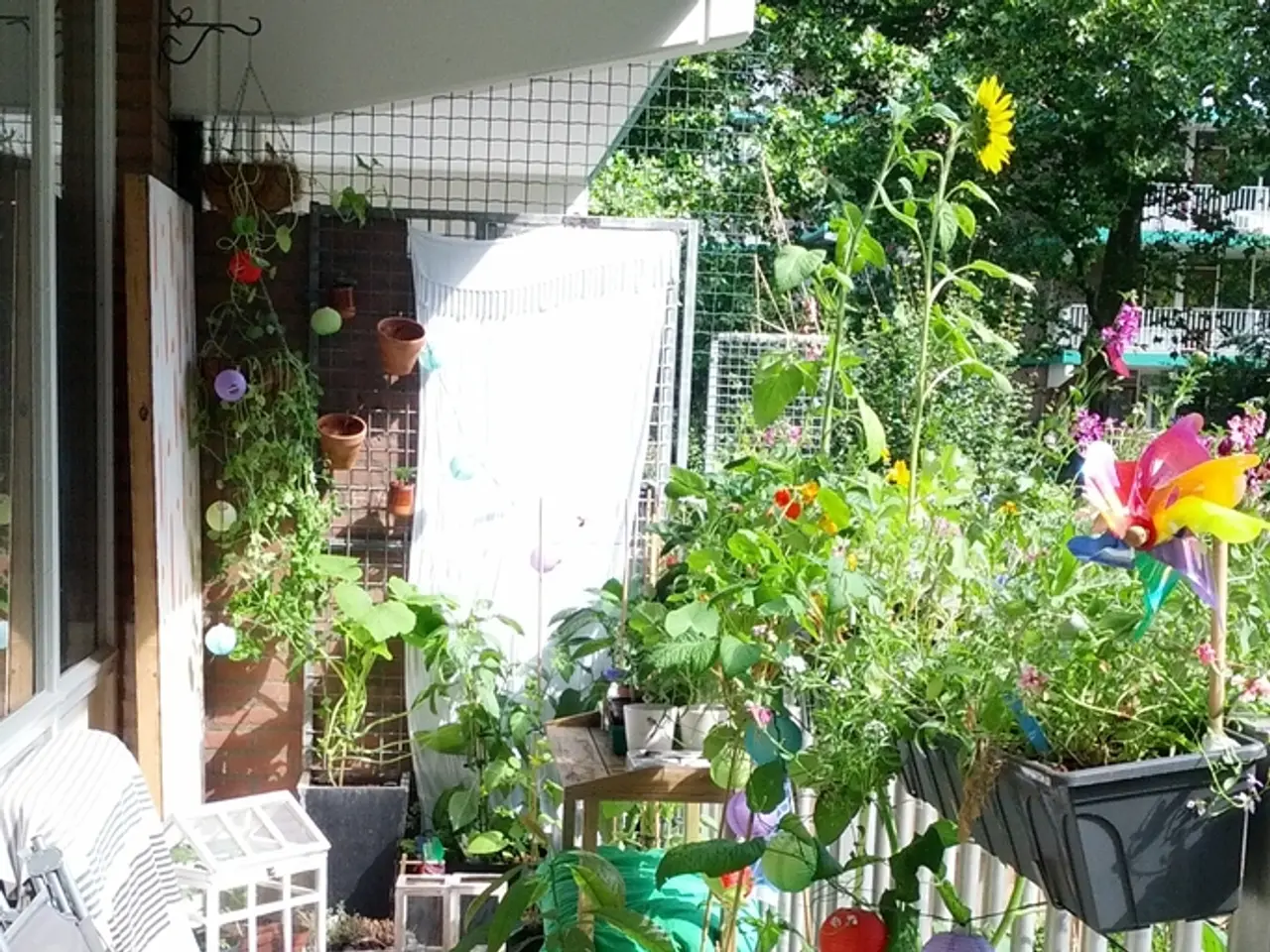DIY Household Tasks and Crafts
DIY home projects have become increasingly popular, offering a chance to save money, customise your living space, and express your personal style. But, what if you could take your DIY game to the next level by incorporating eco-friendly practices and sustainability? Here's a guide to help you explore a variety of eco-friendly DIY home projects, suitable for both beginners and advanced DIY enthusiasts.
For Beginners
Starting small is the key to success. Here are some beginner-friendly eco-friendly DIY projects:
- Reusable Fabric Gift Bags: Made from sustainable fabrics like cotton or linen, these bags offer a simple and effective way to reduce waste by replacing wrapping paper. With just a few sewing steps, you can create these bags and add drawstrings for a personal touch.
- Recycled Cardboard Crafts: Transform everyday items like cardboard tubes into seashell-shaped jewelry boxes or decorative home art. These projects are budget-friendly, beginner-friendly, and perfect for upcycling materials into functional or decorative items.
- Vintage and Thrifted Item Upcycling: Give new life to old furniture or repurpose containers and baskets for home decor. These projects capitalise on existing items to avoid new resource use and can be adapted to beginner skill levels.
For Advanced DIY Enthusiasts
For those with a bit more experience, eco-friendly projects often involve natural materials and more construction skills:
- Bamboo Projects: Build a bamboo pergola, privacy screens, garden planters with trellises, bee shelters, garden storage cubbies, or tiki torch holders. Bamboo is sustainable, lightweight, durable, and these projects may require woodworking skills.
- Upcycled Furniture and Vintage Refinishing: Transform old furniture pieces into stylish, functional home items like dressers or coffee tables. These projects may require skills in woodworking, painting, and design to attract eco-conscious consumers, especially if you plan to sell your creations.
General Themes
Regardless of your skill level, these projects share common themes:
- Using Sustainable Materials: Organic fabric, bamboo, and recycled cardboard are just a few examples of eco-friendly materials used in these projects.
- Reducing Waste: Reusable items, repurposing, and minimising landfill waste are key aspects of these DIY projects.
- Creating Functional or Decorative Home Items: These projects aim to lower environmental impact by producing items that serve a purpose or add aesthetic value to your living space.
Safety First
When embarking on DIY projects, safety should always be a priority. Always work in a well-ventilated area, wear appropriate safety gear, and follow manufacturer instructions. If you're unsure about a particular project, seek advice from professionals or experienced DIY enthusiasts.
Learning and Inspiration
Learning DIY home improvement skills can be done through various means: online tutorials, workshops at home improvement stores, books, and practicing on small projects around your home. Online resources like Pinterest, Houzz, YouTube, and local community centres or adult education programs can provide inspiration and guidance on DIY home projects.
Final Thoughts
DIY home projects offer endless opportunities for creativity, cost savings, and personal satisfaction. By incorporating eco-friendly practices, you can make a positive impact on the environment while transforming your living space. Remember, common mistakes to avoid include not properly measuring and planning, using the wrong tools or materials, and not following safety precautions. And, when in doubt, don't hesitate to call in a professional for more complex projects. Happy DIY-ing!
By exploring various eco-friendly DIY home projects, you can not only save money and customize your home-and-garden, but also make a meaningful contribution to the environment. For example, advanced DIY enthusiasts can create bamboo furniture, while beginners can make reusable fabric gift bags or upcycle vintage items. Don't forget to prioritize sustainability and reduce waste with materials like organic fabric, recycled cardboard, and repurposed items during your DIY ventures.




